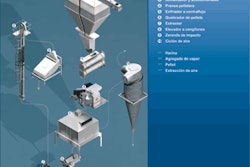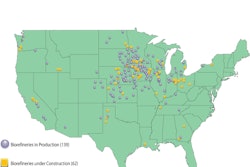Retail food prices at the supermarket increased in the second quarter of 2008, according to the latest American Farm Bureau Federation Marketbasket Survey.
Of the 16 items surveyed, 14 increased and two decreased in average price compared to the 2008 first-quarter survey. Compared to one year ago, the overall cost for the marketbasket items showed an increase of about 8.5 percent.
Two types of cooking oil and bacon showed the largest retail price increases. A 32-oz. bottle of corn oil was up 47 cents to $3.48, a 32-oz. bottle of vegetable oil rose 38 cents to $3.01 and one pound of bacon was up 22 cents to $3.57.
Other items that increased in price were: flour, up 18 cents to $2.57 for a 5-pound bag; apples, up 14 cents to $1.54 per pound; whole fryer chickens, up 12 cents to $1.47 per pound; a 20-oz. loaf of white bread, up 12 cents to $1.90; ground chuck, up 12 cents to $2.85 per pound; pork chops, up 9 cents to $3.40 per pound; Russet potatoes, up 8 cents to $2.55 for a 5-pound bag; 1 gallon of whole milk, up 7 cents to $3.88; mayonnaise, up 5 cents to $3.19 for a 32-ounce jar; sirloin tip roast, up 4 cents to $3.84 per pound; and a 9-oz. box of toasted oat cereal, up 1 cent to $2.98 per box.
Items that decreased in price were: 1 dozen large eggs, down 34 cents to $1.82 and 1 pound of cheddar cheese, down 11 cents to $4.60.
“Prices of many food items continue to creep upward,” said Jim Sartwelle, an AFBF economist. “Those increases, however, pale in comparison to the huge increases in energy costs – for fuel, natural gas, and electricity – that American families have become accustomed to over the past two or three years.”
Taking a closer look at individual food items, Sartwelle explained, “Cooking oils, flour, and bread prices continue to respond upward to historically tight world stocks of grains and oilseeds.” In addition, “Each quarter that passes just reinforces we are producing and buying food in a global market place.”
As retail grocery prices have increased gradually, the share of the average food dollar that America’s farm and ranch families receive has dropped over time.
“In the mid-1970s, farmers received about one-third of consumer retail food expenditures for food eaten at home and away from home, on average. That figure has decreased steadily over time and is now just 19 percent, according to Agriculture Department statistics,” Sartwelle said.
Using the “food at home and away from home” percentage across-the-board, the farmer’s share of this quarter’s $46.67 marketbasket total would be $8.87.
AFBF, the nation’s largest general farm organization, conducts its informal quarterly marketbasket survey as a tool to reflect retail food price trends. According to USDA statistics, Americans spend just under 10 percent of their disposable income on food annually, the lowest average of any country in the world. A total of 87 volunteer shoppers in 36 states participated in the latest survey, conducted during May.


.jpg?auto=format%2Ccompress&fit=crop&h=167&q=70&w=250)












